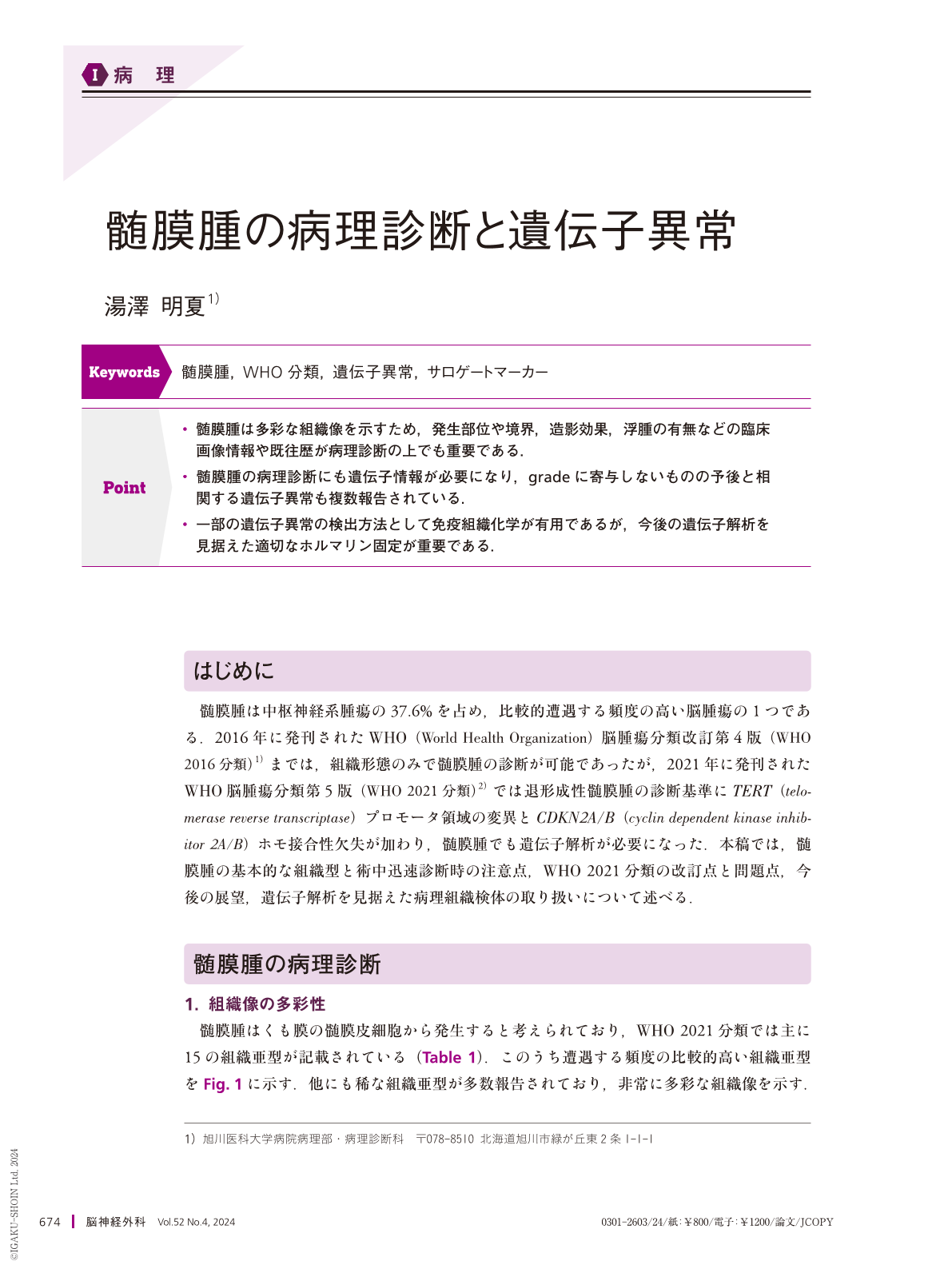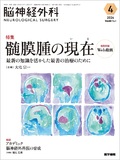Japanese
English
- 有料閲覧
- Abstract 文献概要
- 1ページ目 Look Inside
- 参考文献 Reference
Point
・髄膜腫は多彩な組織像を示すため,発生部位や境界,造影効果,浮腫の有無などの臨床画像情報や既往歴が病理診断の上でも重要である.
・髄膜腫の病理診断にも遺伝子情報が必要になり,gradeに寄与しないものの予後と相関する遺伝子異常も複数報告されている.
・一部の遺伝子異常の検出方法として免疫組織化学が有用であるが,今後の遺伝子解析を見据えた適切なホルマリン固定が重要である.
Meningiomas, renowned for their histological diversity, are one of the most prevalent brain tumors. Some meningiomas show unusual histomorphology, especially in intraoperative rapid diagnosis. Therefore, clinical and radiological information is crucial for pathological diagnosis. Before the 2021 World Health Organization Classification of Tumors of the Central Nervous System(5th edition), pathological diagnosis relied solely on histopathological features. However, this classification introduced new diagnostic criteria for anaplastic meningiomas, which now include TERT promoter mutations and the homozygous deletion of CDKN2A/B, indicating the necessity of genetic analysis. Some rhabdoid and papillary meningiomas have BAP1 alterations, which tend to demonstrate an aggressive clinical course and may represent a phenotype of BAP1-related tumor predisposition syndrome. Heterozygous deletion of CDKN2A/B and loss of H3 p.K28me3(K27me3)are also associated with poor prognosis. Although some immunohistochemical markers like MTAP may serve as surrogates for the homozygous deletion of CKKN2A/B, genetic analysis is required to confirm TERT promoter mutations. Therefore, in routine clinical practice, neurosurgeons and pathologists prioritize appropriate formalin fixation to facilitate genetic analysis using pathological specimens.

Copyright © 2024, Igaku-Shoin Ltd. All rights reserved.


